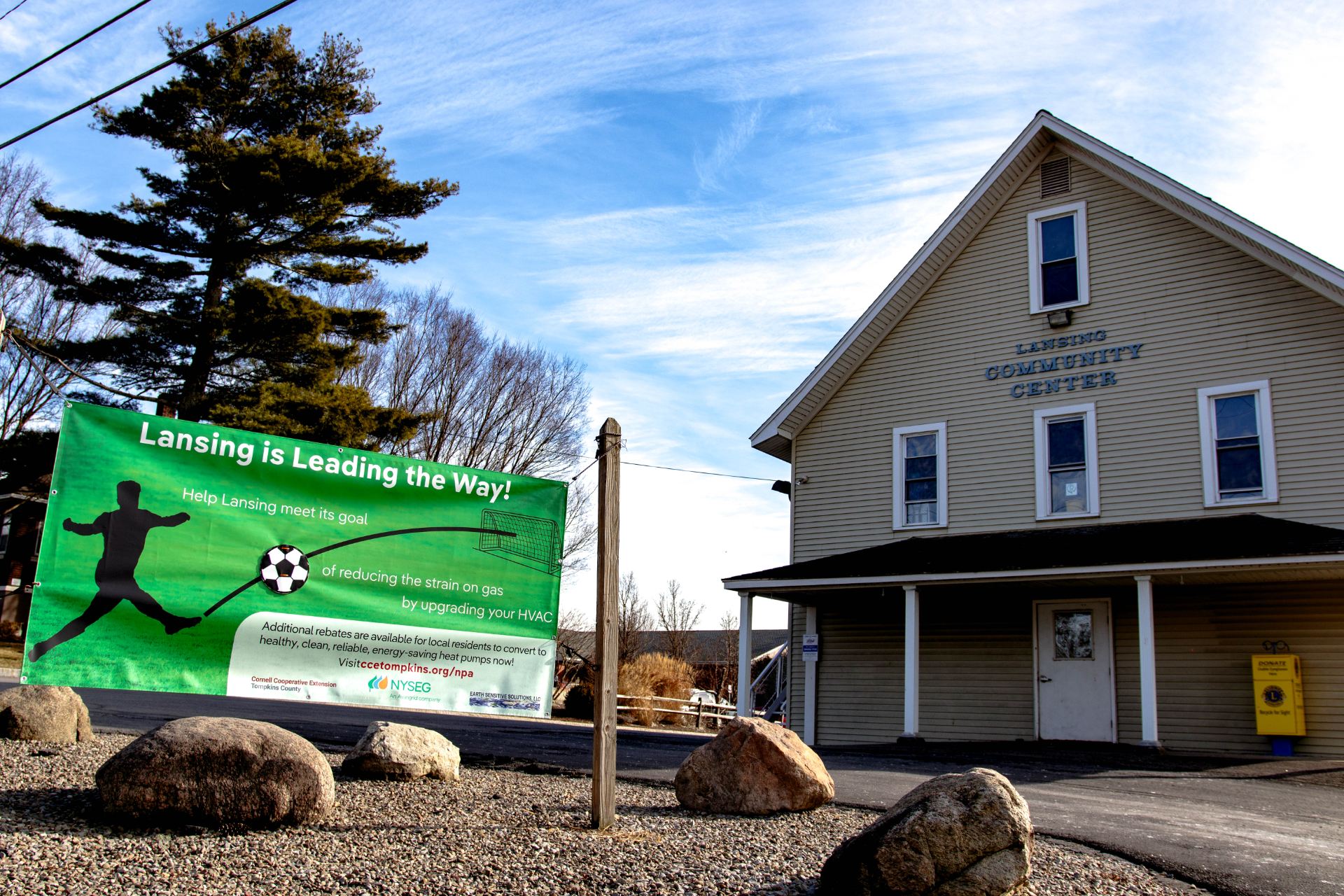New Banners Showing Lansing’s Progress on Energy

If you’re driving past Lansing Town Hall, going East on Auburn Rd, you will likely see a large banner with a silhouetted soccer player kicking a ball toward a goal.
Did you know that this banner is a progress meter for a NYSEG and CCE Tompkins program focused on modernizing home energy in the Lansing area? This is one of two banners—the other is not up yet, but will soon be up at the entrance of the Lansing Central School District.
Illustrating Progress on the Energy Frontier
The ball moving along the arc of the curve toward the goal represents the progress that Lansing is making in its effort to reduce methane gas (natural gas) demand.
This program is actually made up of a suite of five projects funded by NYSEG in the Lansing area to support the deployment of—and education around—clean energy in Lansing. Together, these projects make up the Non-Pipes Alternatives (NPA) Program.
By reducing the use of methane gas in their homes and businesses, Lansing residents can save money and reduce carbon emissions both as individual households and as a community.
Currently, Lansing has reduced 24% of its community campaign goal, so the soccer ball has moved 24% toward the goal. The more gas gets reduced, the closer to the goal the soccer ball gets!
The goal is to reach 100%, or about 566 therms (the equivalent of about 500 homes) by mid-2025. The bulk of the reductions will be with individual homes going all-electric, which is what the 24% toward the goal measures.
But there are other projects as part of the NPA program that will reduce methane usage, including the Cornell Child Care Center, school district HVAC upgrades, and another project that is still in the contract phase are expected to significantly reduce methane gas demand, locally.

Why Does Lansing Need To Reduce Gas?
NYSEG’s models have shown that during times of peak use—like early on very cold mornings when many area residents using gas boilers turn up their thermostats at the same time—there is the possibility that gas pressure could fall below safe levels, especially at the end of the existing pipeline.
One solution is to build a new pipeline to supply more gas to homes. However, a preferred and more cost-effective solution is to reduce gas demand altogether, by heating and cooling homes more efficiently, with heat pumps.
Instead of building a costly pipeline, the NPA program incentivizes households that want to switch to electric heat pumps to make that switch. This will keep homes comfortable during all seasons, while also saving millions by avoiding the buildout of a pipeline.
Get in Touch, Get Your Incentives
To help households switch to heat pumps, the NPA program adds increased incentives on top of the New York State and federal incentives. If you live in any of the shaded areas in the map below, you are eligible for these boosted incentives.

If you want to find out more about the NPA Program and how to make an affordable switch to heat pumps, visit ccetompkins.org/energy/npa.
Or you can contact Guillermo Metz at CCE Tompkins at gm52@cornell.edu or (607) 272-2292 ext. 185 if you have any questions.

